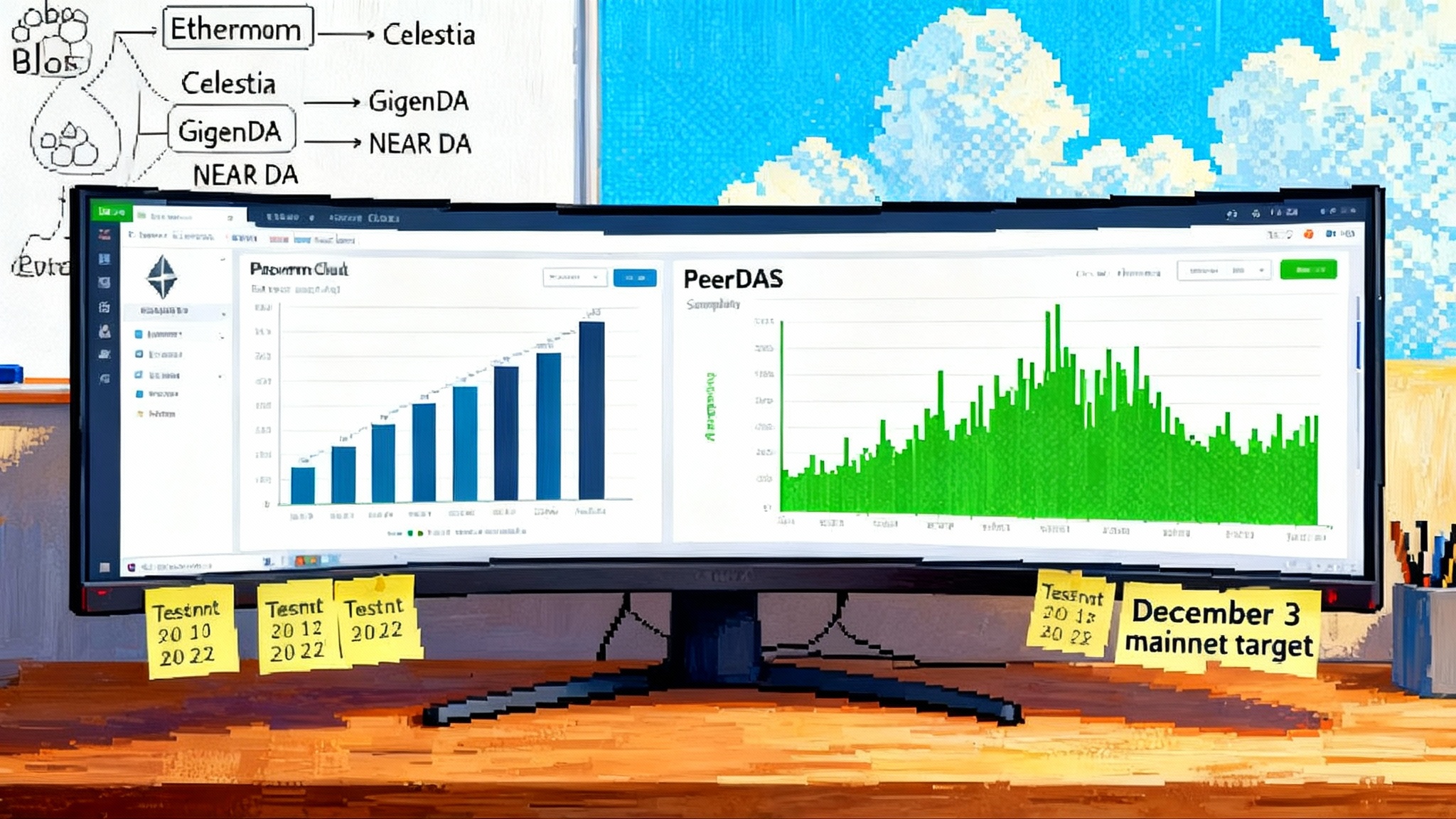Celo’s L1 to L2 Flip Signals an Ethereum Consolidation
On March 26, 2025, Celo completed its move from an independent Layer 1 to an OP Stack Layer 2 on Ethereum. The shift promises cheaper fees, stronger mobile UX, and stablecoin-as-gas while signaling a broader consolidation toward Ethereum’s Superchain.

March 26, 2025: A major chain returns home
At 3:00 a.m. UTC on March 26, 2025, Celo paused its Layer 1, migrated state, and resumed as an Ethereum Layer 2 built on the OP Stack. The team calls it a “hard, hard fork.” The effect is crisp: the same communities and contracts, now with Ethereum security and rollup economics. In Celo’s own words, the move is official and complete at block 31,056,500, with the network adopting EigenDA for data availability and joining the OP Stack ecosystem. The post lays out a clean narrative: faster blocks, lower fees, and seamless continuity for users and developers who were already building on Celo. See the Celo L2 mainnet announcement.
Think of a popular neighborhood restaurant moving into a well run food hall. The kitchen staff stays the same, the recipes do not change, and regulars can still find their favorite dishes. What changes is the shared infrastructure: better security, cleaner utilities, and a flow of new diners from next door. Celo’s move is that kind of relocation. It is not a rebrand to a different cuisine. It is sitting down in Ethereum’s very busy hall and plugging into its foot traffic, tools, and reputation.
Why this migration matters now
Three forces are aligning across Ethereum in 2025.
- Liquidity gravity favors Ethereum. Capital and users cluster near network effects. Rollups that inherit Ethereum’s settlement layer get faster paths to liquidity, integrations, and credibility.
- The OP Stack is standardizing L2s. This makes new chains cheaper to launch and easier to operate, which encourages consolidation rather than fragmentation.
- Data availability costs are falling. With solutions like EigenDA, rollups can publish commitments on Ethereum and store data with specialized operators, cutting per transaction costs while still anchoring to Ethereum. For more on DA trends, see how PeerDAS and blob fee wars are reshaping L2 economics.
For a mobile first network like Celo, those forces translate into practical wins: cheaper transactions, stronger compatibility with mainstream Ethereum tools, and access to the Superchain roadmap.
The immediate gains: cheaper transactions and friendlier mobile UX
Celo already had a mobile centered culture and one second blocks. As a Layer 2, it keeps that snappy feel but benefits from two structural improvements.
-
Lower data costs and rollup economics. Sequencers batch transactions and settle on Ethereum. Using EigenDA for data availability lowers fees further by moving bulk data storage off chain while leaving on chain commitments for verification. The outcome is tangible to end users: send more with less.
-
Ethereum native tooling. Developers can rely on mainstream libraries and infrastructure without custom bridges and adapters for a standalone chain. That shortens integration timelines and reduces operational risk.
A concrete example: a wallet that targets mass market users in the United States can now support Celo with the same toolchain it uses for Base or Optimism. Deployment, alerts, analytics, and custody workflows look familiar. Support teams spend less time explaining non standard quirks and more time shipping features.
Stablecoin as gas, explained in plain terms
On most chains, users must keep a balance of the native token to pay fees. This is a common source of failed transactions and abandoned carts. Celo uses fee abstraction so that a user can pay network fees with approved tokens such as USDC, USDT, and cUSD. The mechanism is simple to adopt in code. A developer sets a transaction field that specifies the fee currency, and the protocol debits fees from that token instead of the native asset.
Here is how that plays out for a first time user who has never held the chain’s native coin. If a friend sends them 20 USDC on Celo, they can immediately pay for the next transaction with a few cents of that USDC. No detour to an exchange. No awkward pre funding of gas. For mobile remittances and checkout flows, this removes friction that typically causes drop off. If your roadmap touches stablecoins and compliance in the United States, review the U.S. licensed stablecoins timeline for context.
Two implementation details matter for builders:
- Wallet compatibility. Libraries like viem already support the feeCurrency field. Ethers.js support may lag. Test on a Celo optimized stack or include a fallback.
- Governance allowlists. The set of tokens that can pay gas is governed. If you are issuing a new token and want users to pay fees with it, you will need to follow the registration process and adapter pattern used for tokens with 6 decimals.
The Superchain advantage: composability and reach
The OP Stack vision is a Superchain where L2s and L3s feel like one network to users. Standardized bridges, shared governance, and low latency interoperability reduce the feeling of dozens of separate islands. For developers this means you can build an application that treats OP Chains as interchangeable capacity. Spin up a new instance for a specific market or partner and rely on the same bridging and messaging layer to move assets and calls between chains. Teams planning cross chain security models should track how restaking goes multichain on L2s.
What does that concretely unlock for a Celo app?
- Cross chain loyalty and payments. A retail wallet could issue points on Celo, redeem them on Base, and settle treasury on Ethereum without maintaining a maze of third party bridges.
- Horizontal scaling for social or creator apps. Deploy the same contracts on another OP Chain to handle a burst of activity while keeping user balances synchronized through native burn and mint flows.
- Unified plugins and devops. Observability, incident response, and upgrades follow the same patterns across OP Chains. Teams can copy runbooks instead of reinventing them per chain.
The big caveat is timing. Interoperability features are being rolled out progressively, not all at once. Builders should plan for staged adoption and feature flag cross chain behaviors.
Decentralization, fault proofs, and the road to Stage 2
In 2024 and 2025, Optimism shipped permissionless fault proofs on OP Mainnet and described a path to Stage 2 decentralization. Stage 2 means no training wheels. Withdrawals are permissionless. The system can recover from faulty code or malicious operators without a backdoor. It also implies broader decentralization of sequencing over time.
Today, the picture is mixed. OP Mainnet reached Stage 1 with permissionless proofs and a Security Council that can intervene during emergencies. Not every OP Stack chain runs the full fault proof system yet. Even when proofs exist, governance bodies may still retain pause powers for safety. The direction of travel is clear, but the timeline is uneven. For teams building on Celo, the practical takeaway is to track each component’s maturity, not just the headline label. See Optimism’s update on OP Stack Stage 1 proofs.
Governance after the flip
Celo’s governance now lives alongside Optimism’s Collective framework and the norms of the Superchain. That brings both upside and coordination questions.
- Upside. Shared standards and a larger talent pool. Upgrades that improve security or interoperability can land across many chains at once. Builders benefit from battle tested patterns and a larger set of reviewers.
- Questions. Who can pause what, when, and how. Celo retains its own governance for chain specific features like fee currency allowlists. The Superchain has its own Security Council and upgrade processes. Builders should map the overlap and make sure they know who to call when something breaks.
A practical exercise for any team in production is to write down a clear, one page emergency runbook. List which contracts you rely on, which councils or multisigs can pause them, and how to reach those responders in a crisis. Align this with your incident severity levels and customer communications plan.
Liquidity and token logistics
Celo’s token now exists natively on Ethereum and is bridged to the L2. That increases visibility for custodians and market makers who prefer L1 native assets. It also nudges liquidity to standard bridges and away from bespoke solutions. Developers should review canonical token addresses after the migration and audit any assumptions in price oracles, gateways, and accounting pipelines.
For stablecoins and app tokens, the Superchain’s burn and mint bridges aim to reduce wrapped asset sprawl. In practice there will still be legacy wraps during the transition. Make an explicit decision about which contract is canonical in your app and publish that choice in your docs and interfaces to avoid user confusion.
Will others follow Celo’s path?
The short answer is yes, but not everyone will. The move makes the most sense for EVM compatible Layer 1s and sidechains that want deeper liquidity and developer mindshare without rebuilding everything. We are already seeing variants of this play:
- Sidechains that become rollups. Several networks that started as application specific or enterprise sidechains have re launched as Ethereum aligned rollups, often using the OP Stack or Polygon’s stack.
- Parachains and appchains that open an L2 presence. Some chains are keeping their original base and adding an Ethereum L2 instance to tap new users, then consolidating or sunsetting as they watch what gets adoption.
Celo is the clearest case of a high profile L1 becoming a Superchain L2 with full state migration and continuity. It is a strong signal that consolidation is more attractive than another wave of new L1s.
The risk ledger
Migrations are not free. Here are the real trade offs and how to handle them.
- Fault proof coverage is uneven. Not every OP Stack chain has permissionless proofs live. Until proofs are universally enforced, withdrawals may rely on upgrade keys or pausable bridges. Action: expose withdrawal risk in your app’s UI and disclosures. If you offer instant withdrawals, cap limits and hedge exposure.
- Governance complexity. You answer to two layers now. Action: maintain an up to date map of on chain roles and emergency powers for the contracts you depend on. Practice a governance drill twice a year.
- Alternative data availability trust assumptions. Using EigenDA lowers costs but shifts some trust to operator sets and recovery procedures. Action: write a short, plain language explainer for your users that covers what happens if DA goes down, and design a read only mode that keeps balances visible during outages.
- Liquidity shifts and token mappings. Canonical tokens may change addresses and bridges. Action: freeze or delist deprecated wraps in your interface and provide guided migration steps. Back migration with clear deadlines.
- Developer ergonomics gaps. Not every tool or wallet fully supports fee abstraction or new transaction fields out of the box. Action: contribute patches or adapters, and offer a fallback path that pays fees in the native asset if needed.
What U.S. builders should do this quarter
- Update endpoints and metadata. Switch your Celo connections to the new L2 endpoints and verify chain IDs, gas pricing, and block times in staging. Monitor your rate limits and indexing jobs during the first week to catch edge cases.
- Implement fee abstraction correctly. Use a library that supports the feeCurrency field. Test with USDC and USDT for both estimation and execution. For wallets, add a clear toggle that lets users choose their fee token and shows the estimated cost.
- Recheck canonical assets. Confirm addresses for CELO, USDC, and your app tokens on Celo L2 and Ethereum L1. If you operate a bridge or rely on one, document the canonical route you support and block others in the UI to reduce confusion.
- Plan for Superchain interoperability. Even if you do not need cross chain calls today, structure your contracts so they can be redeployed on another OP Chain without code changes. Use environment variables and clear interfaces for bridge adapters.
- Tighten withdrawal risk management. If your product offers fast exits, implement limits per user and per asset. Put a clear status page component in your app that reflects the current state of fault proofs and bridge liveness.
- Align with compliance and custody. If you use a regulated custodian, confirm they support CELO on Ethereum and Celo L2. If you store logs for tax and reporting, validate that your indexers handle the migration’s block cutoff and state continuity.
- Educate your support team. Draft simple scripts that explain fee abstraction, new withdrawal times, and how to verify token addresses. The fastest way to lose trust is to confuse users on day one.
How to tell if this is working
Celo’s success as an L2 will show up as lower median fees, fewer failed transactions due to missing gas, and deeper liquidity on Ethereum native venues. You should also expect faster time to integrate for new dapps and partnerships because the migration reduces bespoke work. Track three metrics in your own product to see the impact:
- First transaction success rate for new users who only hold stablecoins.
- Average fee per action over a 30 day window, compared to pre migration baselines.
- Time from code complete to production for a new deployment that touches Celo and one other OP Chain.
The bigger picture
Ethereum is becoming a network of networks that still feels like one place. Celo’s move is a case study in how to plug a mission focused community into that structure without losing its identity. It preserves the features that made Celo distinctive for mobile users, like one second blocks and stablecoin as gas, and trades an isolated L1 for access to the Superchain.
For developers and product teams in the United States, the near term work is straightforward: update endpoints, wire in fee abstraction, and rewrite your runbooks with clear assumptions about proofs, governance, and bridges. The payoff is reach and reliability without a rewrite. If the food hall analogy holds, Celo just moved into a better address. The menu is the same, the line is shorter, and more people can find the door.
Bottom line
Celo’s March 26 migration is more than a technical upgrade. It is an early marker for a consolidation wave where strong projects choose Ethereum aligned Layer 2s over lonely Layer 1s. The winners will be the teams that turn the new primitives into simpler experiences: paying with the dollars people already hold, moving value across chains without mental overhead, and recovering safely when things go sideways. That is how rollups grow up. And it is how users will know they have come home.








